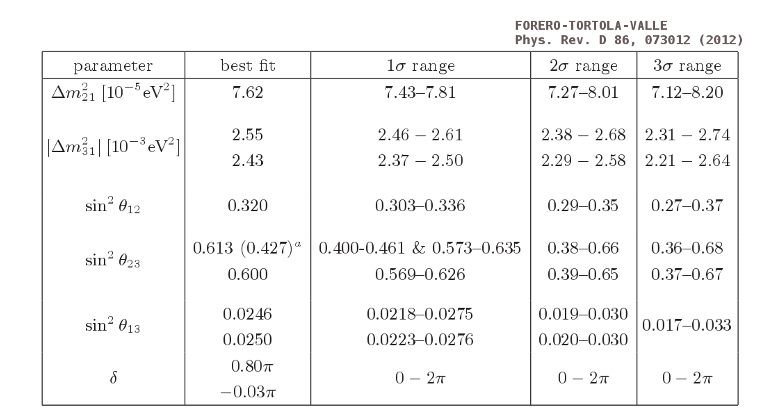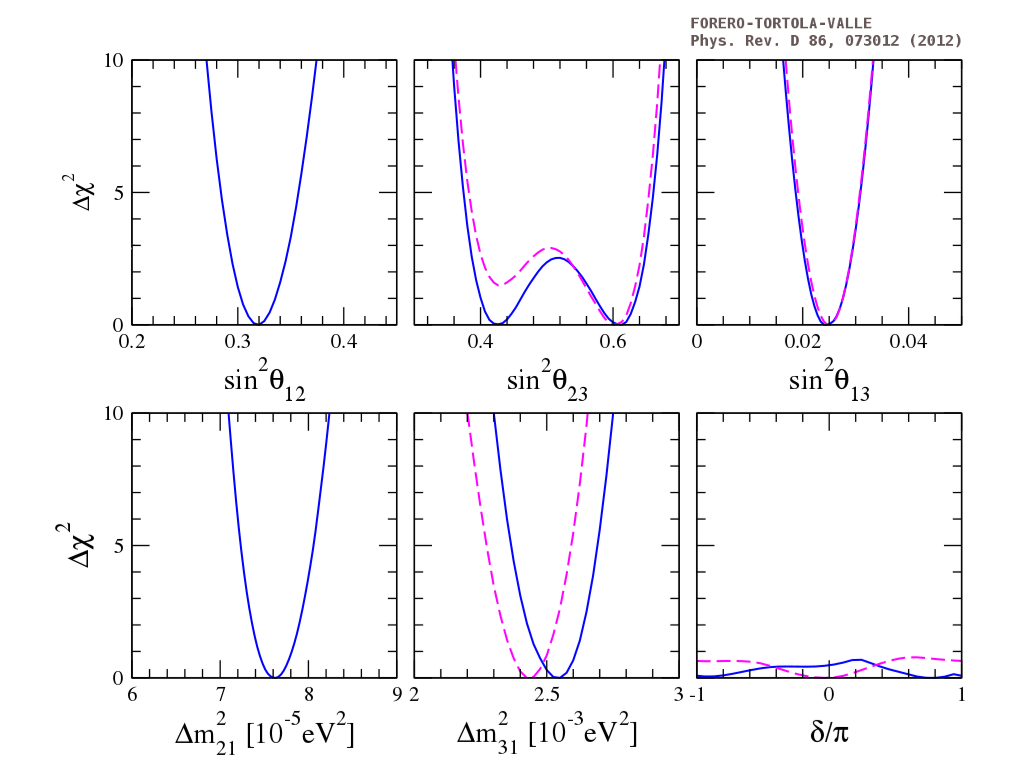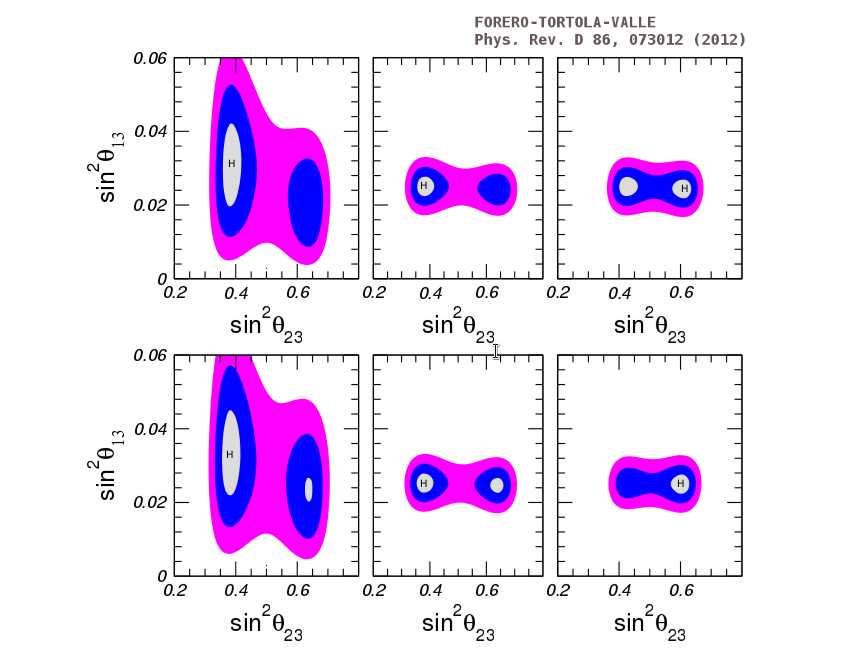We'll summarize here the results of our global fit of neutrino oscillation parameters. Please see Phys. Rev. D 86, 073012 (2012) (arXiv:1205.4018) for more details. If you intend to use these results in a publication please consider citing the previously mentioned article.
The latest fits include the recent measurements of reactor antineutrino disappearance reported by the Double Chooz, Daya Bay and RENO experiments, together with latest MINOS and T2K appearance and disappearance results, as presented at the Neutrino-2012 conference. Moreover, the most recent solar and atmospheric neutrino data are also included in our analysis. We find that the preferred global fit value of the reactor angle is quite large (0.25) for normal and inverted neutrino mass ordering, with the null value being now now excluded at more than 10σ. This measurement marks a landmark for neutrino physics.
Global status of neutrino oscillation parameters:

Neutrino oscillation parameters summary. For ∆m^2_31,sin^2θ_23,sin^2θ_13, and δ. The upper (lower) row corresponds to normal (inverted) neutrino mass hierarchy. (a) This is a local minimum in the first octant of θ23 with ∆χ^2= 0.02 with respect to the global minimum.
χ² results:

∆χ^2 profiles as a function of all the neutrino oscillation parameters sin^2θ_12, sin^2θ_23, sin2θ_13,∆m^2_21 , ∆m^2_31 and δ. For the central and right panels the solid lines correspond to the case of normal mass hierarchy while the dashed lines correspond to the results for the inverted mass hierarchy
The impact of the new experimental results on the value of the reactor angle:

Upper panels: contour regions with ∆χ^2= 1, 4, 9 in the sin^2θ_23-sin^2θ_13 plane from the analysis of long–baseline (MINOS and T2K) + solar + KamLAND data (left panel), long-baseline + solar + KamLAND + new Double Chooz, Daya Bay and RENO reactor data (middle panel) and the global combination (right panel) for normal hierarchy. Lower panels, same but for (inverted) neutrino mass hierarchy
